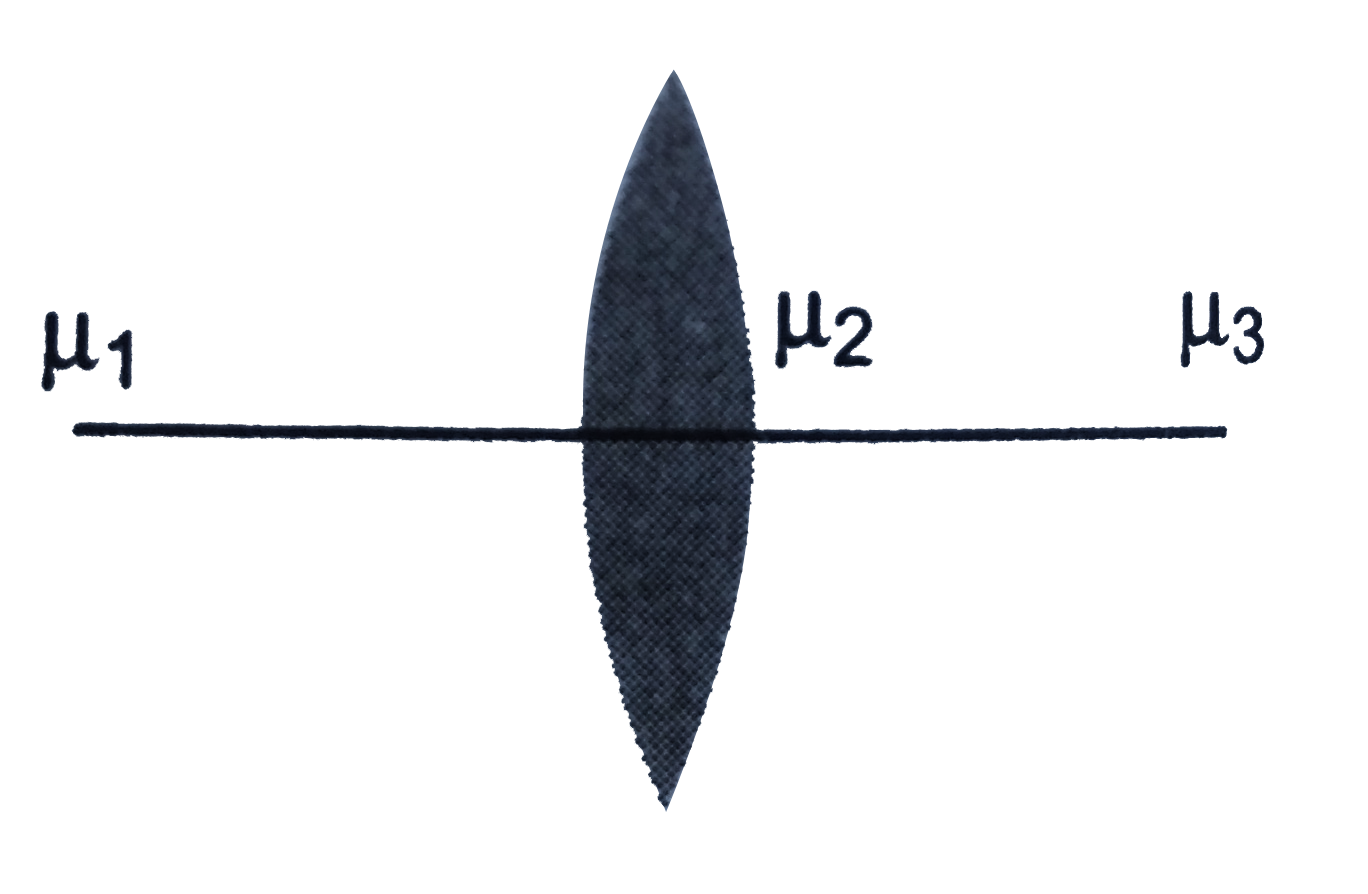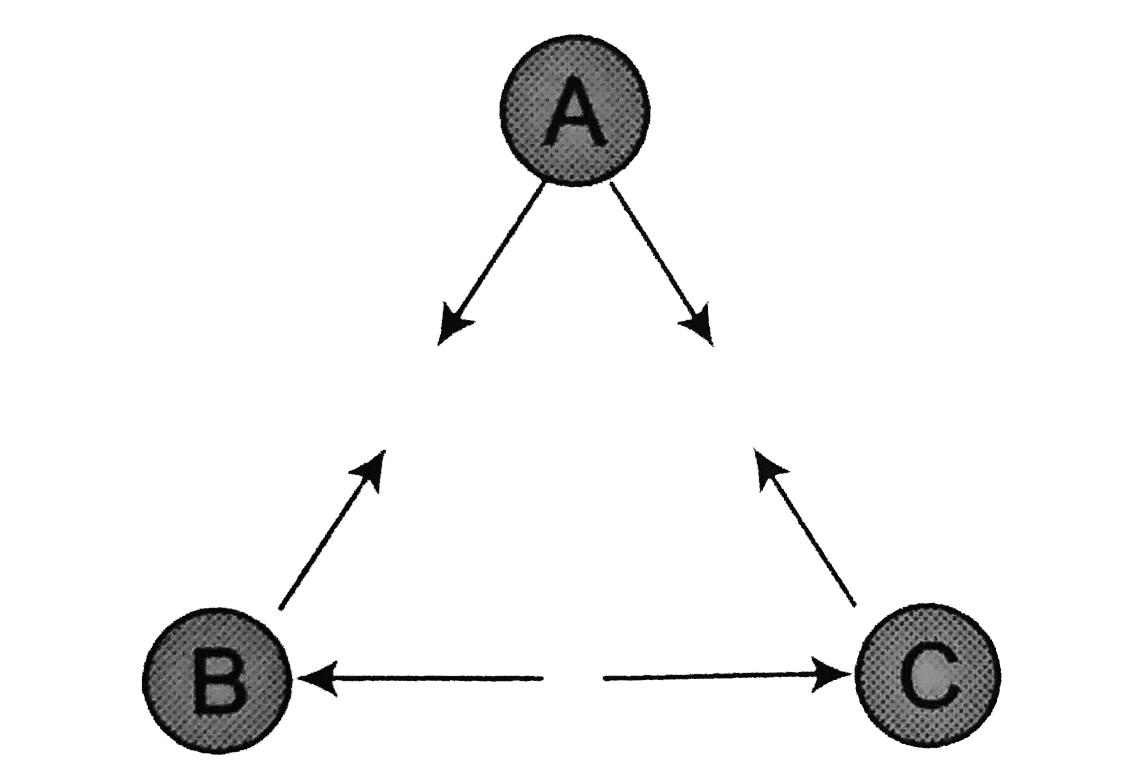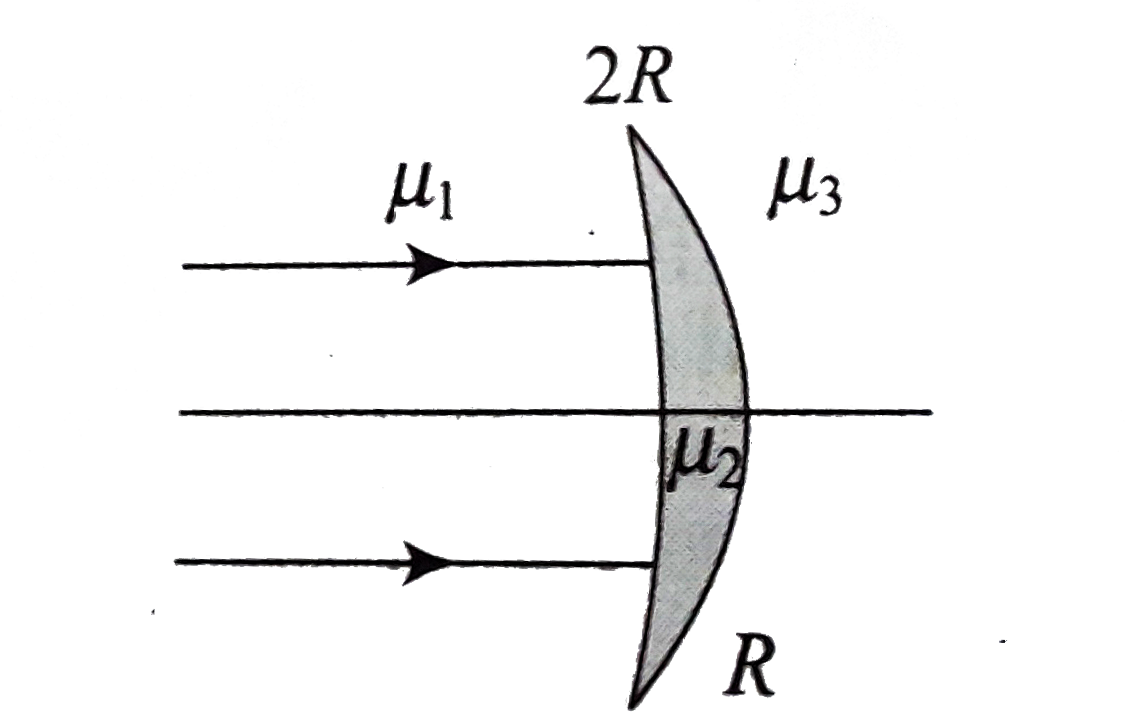The figure shows an equi-convex lens. What should be the condition of the refractive indices so that the lens becomes diverging?  Solution in Gujrati
Solution in Gujrati
2μ2>μ1−μ3
2μ2<μ1+μ3
2μ2>2μ1−μ3
2μ2>μ1+μ3
The correct Answer is:B
Lens become diverging if power is negative.
Topper's Solved these Questions
- TEST PAPERSBOOK - ALLEN CHAPTER - TEST PAPERSEXERCISE - Part-1 Physics
15 Videos
- TEST PAPERSBOOK - ALLEN CHAPTER - TEST PAPERSEXERCISE - part-2 physics
73 Videos
- TEST PAPERSBOOK - ALLEN CHAPTER - TEST PAPERSEXERCISE - PAPER 2
60 Videos
- TEST PAPER 4BOOK - ALLEN CHAPTER - TEST PAPER 4EXERCISE - PHYSICS
45 Videos
- UNIT & DIMENSIONS, BASIC MATHS AND VECTOR BOOK - ALLEN CHAPTER - UNIT & DIMENSIONS, BASIC MATHS AND VECTOR EXERCISE - Exercise (J-A)
7 Videos
Similar Questions
A quantity of 2 mole of helium gas undergoes a thermodynamic process, in which molar specific heat capacity of the gas depends on absolute temperatureT , according to relation:
C=3RT4T0
where T0 is initial temperature of gas. It is observed that when temperature is increased. volume of gas first decrease then increase. The total work done on the gas until it reaches minimum volume is :-
View SolutionA bead is connected with a fixed disc of radius R by an inextensible massless string in a smooth horizontal plane. If the bead is pushed with a velocity v0 prependicular to the string, the bead moves in a curve and consequently collapses on the disc. Then

View SolutionThe diagram shows the arrangement of three small uniformally charged spheres, A,B and C. The arrow indicate the direction of the electrostatic forces acting between the spheres (for example, the left arrow on sphere A indicates the electronstatic force on sphere A due to sphere B). At least two of the spheres are positively charged. Which sphere, if any, could be negatively charged?

View SolutionTwo forces, each of magnitude F have a resultant of the same magnitude F. The angle between the two forces is
View SolutionMatch List I with List II and select the correct answer using the codes given below the lists :

View SolutionThe figure shows an equi-convex lens. What should be the condition of the refractive indices so that the lens becomes diverging?
View SolutionThe diagram shows an equiconvex lens. What should be the condition on the refractive indices so that the lens becomes diverging?
View SolutionFigure, shows a concavo-convex lens μ2. What is the condition on the refractive indiecs so the at the lens is diverging?

View SolutionA convex lens is a diverging lens. True/False
View SolutionA convex lens is a diverging lens.
View SolutionThe focal length of an equi-convex lens is greater than the radius of curvature of any of the surfaces. Then, the refractive index of the material of the lens is
View SolutionA thin convex lens made of material with refractive index 1.23 is placed in a medium with refractive index 1.56. What will be the nature of the lens now, converging or diverging ?
View SolutionA convex lens behaves as a converging lens but a concave lens behaves as a diverging lens.
View SolutionA hollow equi convex lens of glass will behave like a
View SolutionThe diagram shows a concavo- convex lens. What is the condition on the refractive indices so that the lens is diverging? The refractive index of the lens is μ2

View SolutionThe refractive index of the material of an equi-double convex lens is 1.5. What is its focal length ? (Radius of curvature = R).
View Solution
